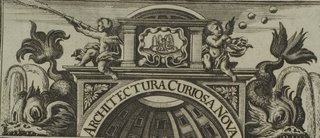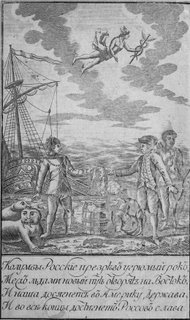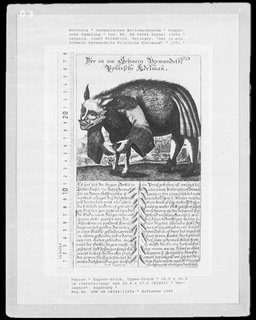





 Walter Rothschild. The Avifauna of Laysan and the neighbouring islands with a complete history to date of the birds of the Hawaiian possession. 1893-1900 at the Smithsonian Institution.
Walter Rothschild. The Avifauna of Laysan and the neighbouring islands with a complete history to date of the birds of the Hawaiian possession. 1893-1900 at the Smithsonian Institution.
Books - Illustrations - Science - History - Visual Materia Obscura - Eclectic Bookart.







"The difficulty of making accurate drawings of objects as minute as many of the Algae and Con[i]fera, has induced me to avail myself of Sir John Herschel's beautiful process of Cyanotype, to obtain impressions of the plants themselves."During the course of the 1840s Atkins produced more than 200 cyanotypes which were included in a 3 volume publication called Photographs of British Algae: Cyanotype Impressions. It stands as the first publication to include images made from a photographic technique and Atkins herself is distinguished as being the first ever female photographer. (The first photograph was produced by Joseph Nicephore Niépce in ~1827)














"Georg Andreas Böckler was a German architect, engineer and author. He was the architect of the city of Nuremberg and specialized in hydraulic architecture. Architectura Curiosa Nova was his main opus, a four-part work in one volume, published in 1664.
Illustrated with 200 engravings, the decorative plates of the first three parts show the theory and application of hydrodynamics for fountains, water-jets, spray-patterns, garden fountains and well heads; and elaborate and often fanciful designs for free-standing fountains. The fourth part includes designs for grottoes, garden pavilions and architectural designs including views of European palaces."
It was my good fortune while fossicking around in the digital cloisters of the University of Heidelburg to discover that since my last post about Böckler's Architectura Curiosa Nova, the whole work has been posted online. It would never be described as understated. Many wedding cake decoration ideas within.
The image above the engraving with the statue carrying a trident was the only plate I saw (when I remembered to look) with an engravers name, but I can't make it out even using the pdf zoom capability at the site.
Part I, II, III, IV of Architectura Curiosa Nova.nb. Part I of Architectura Curiosa Nova has quite a few pages of text and only a couple of images of piping diagrams; Part II has images of the fountain heads for the most part; Part III has both 'wall' variety and complete fountain images and Part IV concentrates on depicting some of the great houses of Europe and mazes.
- Previously: Böckler's other great work, Theatrum Machinarum Novum.
- Also previously: a post about another of the 'Theatre of Machines' authors, Jacques Besson, which has links to all the other renaissance engineering-type posts at BibliOdyssey.
- The best (large) colour examples from this baroque work can be found by searching on 'boeckler' at Panteek Gallery. [personally, I think the original black and white plates are superior]
- Mazarine have a 'quick and dirty' large thumbnail view of some of the mazes (a usual addition to any gardening or architectural landscape work of the day) from Part IV.
- For the keen: George Goodall's Facetation website is always worth perusing, even if it makes my head spin a bit [Böckler at Facetation]

 Travels of the Russian merchant Grigor'ii Shelikhov from 1783 to 1787 from Okhotsk over the Eastern Ocean to American shores, and his return to Russia, with detailed information on the opening of Kyktaka and Afagna - A frontpiece from somewhere in the Meeting of Frontiers collection at the Library of Congress.
Travels of the Russian merchant Grigor'ii Shelikhov from 1783 to 1787 from Okhotsk over the Eastern Ocean to American shores, and his return to Russia, with detailed information on the opening of Kyktaka and Afagna - A frontpiece from somewhere in the Meeting of Frontiers collection at the Library of Congress. The Independent Gold Hunter on His Way to California.
The Independent Gold Hunter on His Way to California.  Tvende Slags Norske Söe-Orme 1752 Pontoppidan, Erik. I think this comes from Oslo University Library; they have a series on monster images and this was the only one I hadn't seen or previously posted.
Tvende Slags Norske Söe-Orme 1752 Pontoppidan, Erik. I think this comes from Oslo University Library; they have a series on monster images and this was the only one I hadn't seen or previously posted. This is from an interesting set: Greetings received by the National Post Office in Norway from international postal organisations in the late 19th century; in this case from Japan. [thumbnail page]
This is from an interesting set: Greetings received by the National Post Office in Norway from international postal organisations in the late 19th century; in this case from Japan. [thumbnail page] This is one of about 90 illustrations of snow crystals from the early 19th century in 3 volumes at Waseda University Library, Japan. Somewhere around there is an english description, alas I can't refind it at present. Those of you in the northern hemisphere may not wish to know anyway.
This is one of about 90 illustrations of snow crystals from the early 19th century in 3 volumes at Waseda University Library, Japan. Somewhere around there is an english description, alas I can't refind it at present. Those of you in the northern hemisphere may not wish to know anyway. Octonaries upon the Vanitie and Inconstancie of the World created in 1609 by Esther Inglis - a very short handcrafted manuscript at NYPL.
Octonaries upon the Vanitie and Inconstancie of the World created in 1609 by Esther Inglis - a very short handcrafted manuscript at NYPL. Aeroplane Train Car 1930's - one of more than 200 prints on display in the AE Haliwell collection at the University Arts and Humanities Data Service, UK.
Aeroplane Train Car 1930's - one of more than 200 prints on display in the AE Haliwell collection at the University Arts and Humanities Data Service, UK. Leopold, Josef Friedrich, Der in ein Schwein Verwandelte Polnische Edelmann, 1701, Flugblatt, Nürnberg, Germanisches Nationalmuseum, Graphische Sammlung, HB 24544.
Leopold, Josef Friedrich, Der in ein Schwein Verwandelte Polnische Edelmann, 1701, Flugblatt, Nürnberg, Germanisches Nationalmuseum, Graphische Sammlung, HB 24544."The law of proportion according to which the several colours are formed,
even if a man knew he would be foolish in telling, for he could not give any
necessary reason, nor indeed any tolerable or probable explanation of them."
Plato Timaeus